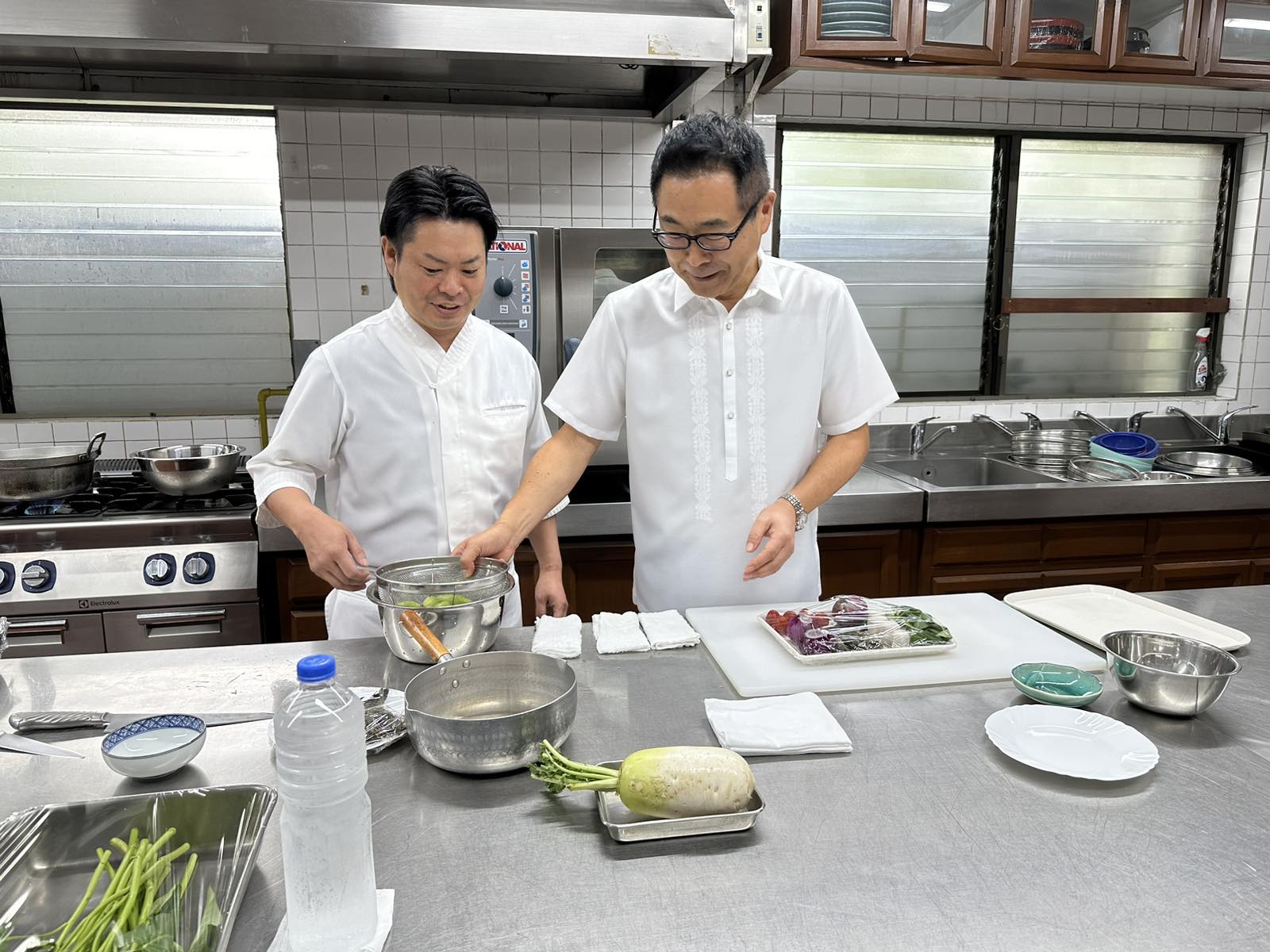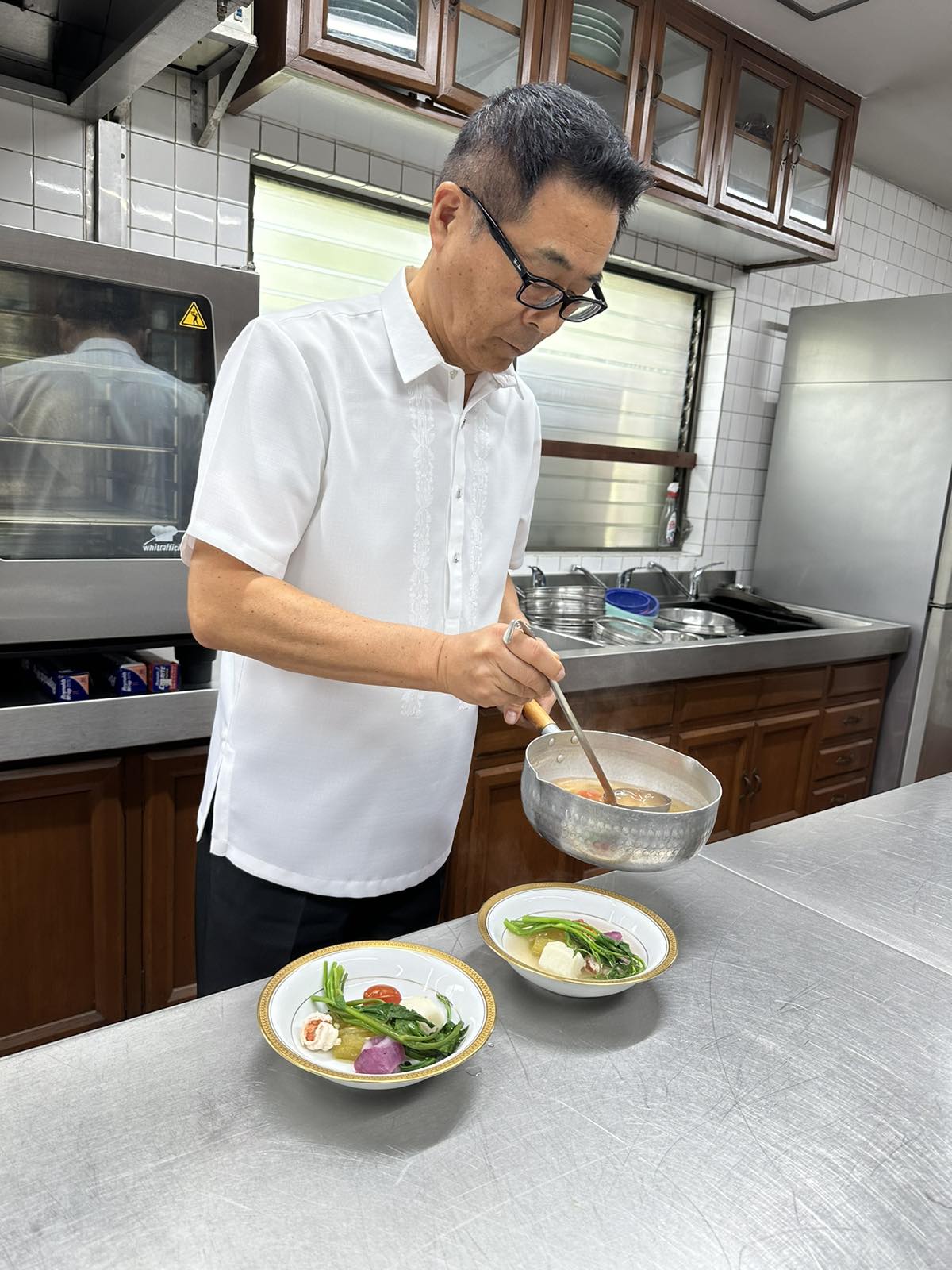Japanese envoy tries hand in making 'sinigang'—his favorite Filipino dish
Is there any thing that define a traditional Filipino dish more than a sinigang?
While his country is renowned worldwide for its love affair with food, Japanese Ambassador to the Philippines Koshikawa Kazuhiko said that he, like many Filipinos, have fallen in love with sinigang; specifically sinigang sa kamias.
 (From left) Japanese Chef Daisuke Suzuki and Japanese Ambassador to the Philippines Koshikawa Kazuhiko (Photo by Raymund Antonio/MANILA BULLETIN)
(From left) Japanese Chef Daisuke Suzuki and Japanese Ambassador to the Philippines Koshikawa Kazuhiko (Photo by Raymund Antonio/MANILA BULLETIN)
Calling it “one of the best soups in the world,” the envoy whipped up his own version of sinigang sa kamias and invited the Manila Bulletin on Wednesday, Dec. 13, to witness his culinary skills.
“Also it represents the soup of the Philippines like Japanese miso soup. It’s a symbol of Japanese soup. I think sinigang is a symbol of very typical soup of the Philippines. One of the best and very much appreciated of many Filipinos,” he said.
Sinigang, likened to the more popular tom yum soup of Thailand, has a sour and savory taste and served usually piping hot with fresh vegetables and one’s choice of meat.
For Wednesday’s showcase of kitchen skills, Koshikawa, who just spent his 67th birthday, went with the healthier seafood-based alternative of using shrimp instead of the usual pork meat for his sinigang sa kamias.
He picked his own kamias, called a star fruit in other countries, from his own backyard at the ambassador’s residence and proceeded to his spacious kitchen where he was assisted by Japanese Chef Daisuke Suzuki.
 Amb. Koshikawa gets kamias from his own backyard in his Forbes Park residence for his sinigang. (Raymund Antonio/MANILA BULLETIN)
Amb. Koshikawa gets kamias from his own backyard in his Forbes Park residence for his sinigang. (Raymund Antonio/MANILA BULLETIN)
The official, who arrived in the Philippines in December 2020 during the height of the Covid-19 pandemic, remembered sinigang as the first Filipino dish he has tasted upon the invitation of then-Philippine Ambassador to Japan Manuel Lopez.
But at that time, he recalled tasting sinigang with tamarind and shrimps.
“First, I was very surprised. Oh my God, it was very sour,” the envoy said, noting the “very strong impression” that the Filipino vegetable soup gave him.
Since then, he grew to love sinigang and its different version, particularly his chef’s guava sinigang ala Japan because of its “little Japanese flavor and taste.”
“Every Philippine guest here appreciated guava sinigang ala Japan or Japanese-inspired guava sinigang,” Koshikawa furthered.
 Amb. Koshikawa prepares the Filipino sour soup dish with fresh kamias, kangkong, and other vegetables. (Photo by Raymund Antonio/MANILA BULLETIN)
Amb. Koshikawa prepares the Filipino sour soup dish with fresh kamias, kangkong, and other vegetables. (Photo by Raymund Antonio/MANILA BULLETIN)
Despite his hectic schedule as his country’s representative to Manila, the ambassador said he had to learn how to cook since he took care of their children whenever his wife, who influenced his cooking, was sick.
“We have four children. Somebody has to take care of them at home when my wife was ill,” he added, sharing that his signature Japanese dish is the Gyusuji Daikon Nikomi, or the Japanese Beef Tendon Stew with daikon radish, which takes two hours to prepare.
And true enough, if his sinigang sa kamias is any indication, the Japanese envoy has a flair in the kitchen, serving the Manila Bulletin an upgraded version of the Filipino favorite that serves as a reminder to him of a country that became his second home for the past three years.
Soon, Koshikawa said he will also make chicken tinola—another favorite dish of many Filipinos.